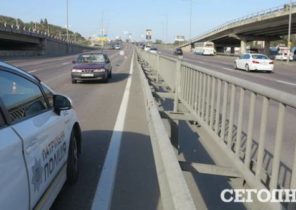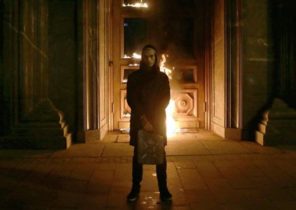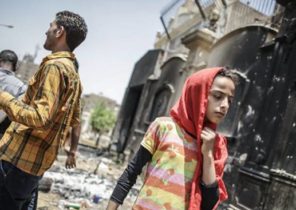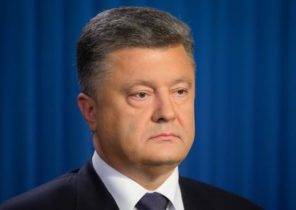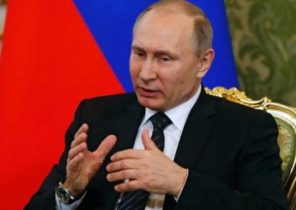The year 1917 was not yet a year Simon Petlyura. But he raised, making a member of the Central Rada, Chairman of the Ukrainian General Military Committee, member of the General Secretariat. However, Petliura was still in the shadow of Mikhail Hrushevsky and Vladimir Vinnichenko.
By the beginning of the revolutionary spring Simon Petlyura was known only to a narrow circle of the party, the revolutionary intelligentsia. A public politician he has become since the first all-Ukrainian military Congress.
“The first time I heard Simon Petlyura as he turned to the military mass on the first military Congress — recalled Vladimir Kedrovsky. The impression of the speech Petlyura was enormous. His every word was heard sincerity, a kind of fascinating intimacy and a deep faith in the victory of the ideas he proclaimed. Then, in the admiration with which the Congress listened to the speaker, and then in a burst of applause and shouts of “Glory!” which were permeated his speech, once it became clear that the only leader of the Ukrainian armies is Simon Petlyura”.
Since then his name has become one of the symbols of the Ukrainian national movement.
But at that time the most important political decisions of the Ukrainian revolution was made in the walls of the Central Rada, during the negotiations with the provisional government. On the Ukrainian political scene was dominated by Mikhail Hrushevsky and Vladimir Vinnichenko.
High intelligence, the image of the scientist and writer helped them to distance themselves from the main mass, creating the myth of their special knowledge about the laws of social development.
But the second period of the Ukrainian Central Rada after the proclamation of the III and IV Wagon dispelled this myth.
In 1918 and particularly 1919 and the years of the revolution came from the banks of the overflowing of political activity. It is time for armed struggle. Now Ukraine needs was not so much an intellectual, how many people, filled with profound faith, convinced in the final victory of the idea of Ukrainian statehood. That is a charismatic leader. That was Symon Petliura.
There are a number of facts testifying to the strong personality of the main chieftain. At its meeting on 15 December 1917 Simon Petlyura appealed to the Ukrainian government to finally decide, “or we fight or not” with the Bolsheviks. The secretaries-General Vladimir Yeshchenko and Nikita Shapoval supported Simon Petlyura. And Vladimir Vinnichenko believed that “first we must ask the Council of people’s Commissars, fighting or not, only then can we decide on such drastic methods of struggle.” But neither the Chairman of the Central rrady, nor the head of the General Secretariat did not support Simon Petlyura.
The General Secretariat of the eighteenth of December was informed by the Chairman concerning the application of the Petliura resignation from the post of General Secretary of military Affairs. The resignation was accepted.
But Petlyura went to the radical opposition, did not mercilessly criticize his successor Nicholas Portia. He just withdrew from the activities of the UNR government. After the resignation of Simon Petlyura went to the Left Bank, where he created the volunteer Haidamak Kosh (military formation — approx. ed.) of Sloboda Ukraine. Kosh, which was divided into black and red Gaydamak has become one of the most efficient Ukrainian units.
In January 1918, the year of the social Democrat Symon Petliura makes the user to suppress the Bolshevik uprising in Kiev. He wins. Petliura was not responsible for the battle of Kruty, as he later attributed the Bolsheviks. He also is not responsible for the military defeat of Ukraine in early 1918, the year. The defence were completely different people. Simon Petlyura reacted negatively to the invitation of the Central Council of German and Austrian troops to Ukraine. Therefore, participation in the work of the Ukrainian Parliament in the spring of 1918, the year was not accepted.
A little later he again returned to politics. Became Chairman of the Kiev provincial Zemstvo creates and heads the all-Ukrainian Zemstvo Union. After the Hetman’s coup in the state, a wave of arrests of social activists and local leaders. Simon Petlyura even dared to publicly Express to the German Ambassador in Ukraine, the Baron, the Mumma protest for this reason.
The twenty-seventh of July and was arrested himself Simon Petlyura. He was accused of training anti-government insurgency. In jail he stayed for several months and was released thirteenth of November. On the same day the opposition in relation to the Hetman Pavlo Skoropadsky created the Directory, which was to prepare and to take the lead antigermans uprising in Ukraine. At the insistence of Eugene Konovalets Simon Petlyura was elected a member Directory.
Recently after leaving the chamber, he went to the White Church at the location of the Riflemen, and was engaged in the preparation of the rebellion, proclaiming himself the main leader. Victory revolt, the triumphal entry into Kiev on a white horse gained even more popularity to the chief ataman. That white horse he will long remember.
It Petlyura took the intransigent position of the Bolsheviks who launched the attack on the territory of the UPR in the East. “From the members of the Directory against the Bolsheviks spoke sharply Petlyura. Shvets said vaguely. Vinnichenko, as always, improvised and had a clear view of the situation,” stated Isaac Mazepa.
About optimism and faith Petliura has been discussed many. But almost always memoirists, as agreed, immediately emphasized the Petliura ability to pass their faith and optimism to others. Not only was he able to easily talk to strangers on the front line, but also inspired them to a victorious battle. It is quite obvious trait of harizmatika. Possession of simple speech, wearing simple clothes, etc. give the opportunity to others to recognize him as leader, and therefore to trust him.
Simon Petlyura perfectly possessed this art. If more precisely, such a skill has been its immanent feature. “He almost spent all his time at the front, and very often alone, without any protection, went to the position where cheered the soldiers with their simple, full of deep faith in the victory of conversations with them, recalled Vasily Passage. — Despite the very unfavorable situation on the front, Petlyura at all gave the impression of some fun vigor. Seeing the old man Petliura, the warrior that maybe the moment before bitterly complained about his suffering, immediately forget about them. It seemed that all they have already been exhausted and that the body gained fresh strength for new experiences… Petlyura was the leader of the spirit of the nation, its land. He felt what he could not predict other policies. A characteristic of his character was a creative optimism. He saw only the future of Ukraine, to fight for bequeathed to the last drop of blood.”
The most successful generalized characteristics to Simon Petliura find Nicholas Kovalevsky, who knew the chieftain: “Symon Petliura had all the data to become the leader of the nation. However, he lacked the big scale, which characterized the revolutionary temper of the great Hetman Bohdan. He lacked the wide steppe of the scale and recklessness with which our great Hetman is not just going to the blood and turmoil to achieve high goals. He was too surrounded by modern humanism, to follow the footsteps of the Hetman. And this, maybe, was the tragedy of Simon Petlyura. This rashness, which is always combined with cruelty, and found our historical enemies and their leaders”.
1919 made him the undisputed leader of the Ukrainian national movement, the unifying symbol of the nation. In February, the South landed a contingent of the allies. Its leaders considered the UPR a form of Bolshevism. For power was the socialist party. And the North is actively advancing Bolsheviks. Even from Kiev, the Ukrainian troops were forced to retreat. There was a total crisis of the Ukrainian political system. From state activities departed prominent political figures of the UNR Hrushevsky, Volodymyr Vynnychenko, Mykyta Shapoval. One after another, politicians began to travel abroad.
Fundamentally different was the decision of Simon Petlyura. The eleventh of February, he appealed to his party with a letter: “on the Basis that the current situation in Ukraine is extremely difficult and dangerous, I believe that at this time, all creative forces of our region must engage in public service. As the son of his people to the Homeland I do not think it possible to shirk their responsibilities, and will be while it is possible to stay and work on the public. Given all this, I temporarily leave from the members of the Ukrainian social — democratic party.”
The output of Symon Petliura of the Ukrainian social democratic labor party witnessed the completion of the evolution of his mindset in the direction of the national state idea. In the party he never returned. Ukrainian social democracy has lost one of its leaders. But Ukraine has found a consistent fighter for national independence.
But it was still the case Bolbochan, riots chieftains Volohov and Oskilko, local chieftains and tamonikov.
The defeat of the UNR Army in late 1919, the year depended not on the characteristics of Symon Petliura and General domestic and foreign market conditions. It made the chieftain actively to seek allies in the fight against the Bolsheviks. Therefore, his views are treated in Poland.
December 5, 1919, the UPR government has deemed it expedient departure of Simon Petliura in Warsaw. 21-24 April, 1920, between the governments of the UNR and Poland were signed political and military Convention. Poland recognized the right in the Western lands. It was a necessary concession in order to preserve the statehood on the territory. In exchange for this recognition, the Ukrainian side has received military support in the fight against the Bolsheviks. The Warsaw Pact caused a flurry of accusations against Petliura of the Ukrainian political forces.
The military campaign of the Polish and Ukrainian forces started successfully, the allies entered Kiev, but how long to stay there are unable. The government of UNR and the surviving military units were forced to leave their land and go to the territory of the Commonwealth. From the late 1920’s to Petliura began last emigration period of life. He was short, just six years, but a rich organizational and analytical work.
First of all, the head of the UNR Directory considered necessary to understand the reasons for the failure of the liberation movement. As he wrote in 1922, the year in a letter to General Mikhail Udovichenko, for it “has already begun the court of history.”
According to Simon Petlyura, 1917 — the year of the revolution — has revealed a number of shortcomings in the birth of the nation. Namely, the lack of a sufficient number of those elements, “who is the black state work can create some real value”. Among the political elite dominated “or fiction, or demagogues or naive people who believed in the power of resolutions.”
However, Simon Petlyura, though assumed “some new complications in the implementation of our national idea”, but didn’t lose “no faith, no hope that the ideal of the nation be realized.” In 1923 he wrote and published enough volume software work “of the Modern Ukrainian emigration and its objectives”. It was a plan of action for the near future.
Simon Petlyura concluded that the formation of the Ukrainian state is the thing of the whole nation, not one class or one party, a matter that requires the collective will of the nation, the priority of the state over the party.
It was interesting geopolitical forecast of Petlyura. It provided that “all States formed after 1917 in the former Russia do not have chances of a lasting existence and will always be under threat, while in the South of the former Empire is not organized and is not in force will include independent state of the Ukrainian people”.
Simon Petlyura remained consistent and bitter opponent of the Bolshevik regime: “the conditions of our stay abroad their duty in this case will execute only when you help to carry out the final compromise of Bolshevik experiments in the eyes of the world”.
Of course, the Bolshevik government could not forget Petlyura this line of thought. He was one of the most dangerous enemies. Especially were afraid of Moscow to restore the Union of Pilsudski-Petlura.
When in early may of 1926, the year the Jozef Pilsudski regained power in Poland, the restoration of the Union action was likely. This, in our opinion, was the cause of the murder of Symon Petliura.
The tragic death of more expressive emphasized the uniqueness and scale of this figure in Ukrainian history of the XX century. It is no accident the Bolshevik propaganda for many years has made every effort to transform the heroic image of Petlyura in the cartoon.
The consequences of this aggressive propaganda not been overcome completely today.
